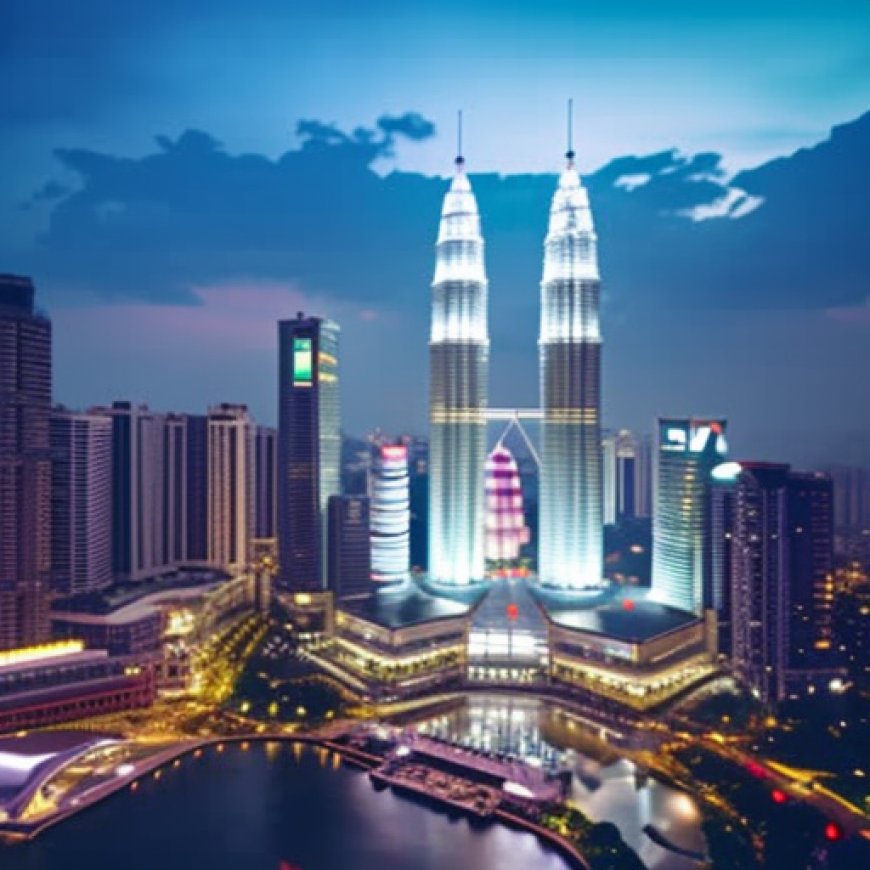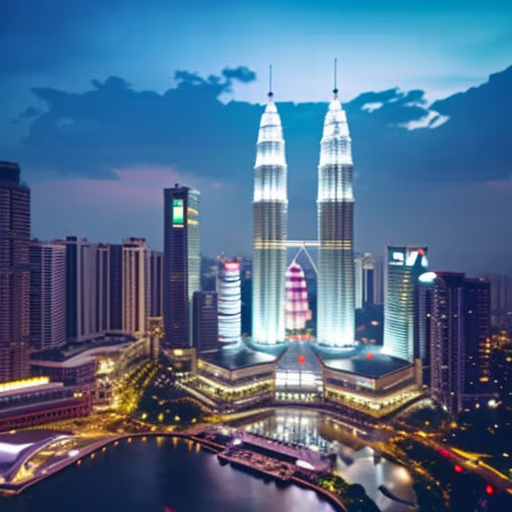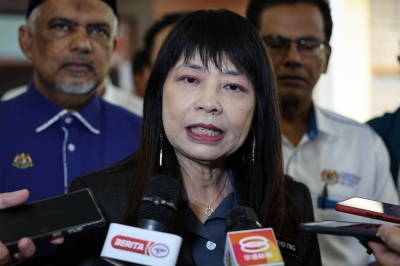Malaysia’s economic activities improving, says deputy finance minister
Malaysia's economic activities improving, says deputy finance minister Malay Mail


Malaysia’s Economic Activities Improving with Increased Export Volumes

GEORGE TOWN, April 13 — Deputy Finance Minister Lim Hui Ying today stated that Malaysia’s economic activities this year are showing signs of improvement, with an increase in export volumes during the first two months of this year.
Export Volumes on the Rise
The Tanjung MP highlighted that the country experienced a decline in export volumes in the fourth quarter of last year. However, this downward trend did not persist as exports have increased at the beginning of this year.
Purchasing Managers’ Index (PMI) and Industrial Production Index (IPP)
Lim Hui Ying mentioned that the Purchasing Managers’ Index (PMI) has risen to 49 in the first quarter of this year, compared to 47.5 in the fourth quarter of 2023. Additionally, the Industrial Production Index (IPP) recorded a growth of 4.3 per cent in January.
Malaysia’s Path to High-Income Country Status
Referring to data from the Asean+3 Macroeconomic Research Office (AMRO), Lim Hui Ying stated that Malaysia is on track to become a high-income country by the end of this decade.
Foreign Direct Investments (FDI) and Manufacturing Sector Growth
The Deputy Finance Minister highlighted the robust inflows of foreign direct investments (FDI) and the rapid growth of the manufacturing sector, particularly in the semiconductor industry. She emphasized that new foreign investment inflows will continue to boost Malaysia’s growth rates, enabling the country to achieve high-income status. The government’s commitment to maintaining fiscal and monetary discipline will also contribute to this goal.
Contributing Towards a Bright Economic Future
Lim Hui Ying expressed confidence in the potential of every Malaysian to contribute towards the nation’s bright economic prospects and shared future as an advanced nation.
Addressing 3R Issues
The Deputy Finance Minister also addressed the recent manipulation of 3R (religion, race, and rights) issues for personal political gains. She emphasized the importance of handling issues related to religion and race with care in order to avoid disharmony and preserve the peace that has been built by Malaysia’s diverse communities. Lim Hui Ying hoped that events like the Hari Raya Open House would serve as evidence of mutual respect among different cultural communities and mark the beginning of efforts to prevent the manipulation of 3R issues.
SDGs, Targets, and Indicators
| SDGs | Targets | Indicators |
|---|---|---|
| SDG 8: Decent Work and Economic Growth | 8.1: Sustain per capita economic growth in accordance with national circumstances and, in particular, at least 7 per cent gross domestic product growth per annum in the least developed countries | – Increase in export volumes in the first two months of this year – Growth of 4.3% in the Industrial Production Index (IPP) in January |
| SDG 9: Industry, Innovation, and Infrastructure | 9.2: Promote inclusive and sustainable industrialization and, by 2030, significantly raise industry’s share of employment and gross domestic product, in line with national circumstances, and double its share in least developed countries | – Rapid growth of the manufacturing sector, especially the semiconductor industry – Robust inflows of foreign direct investments (FDI) |
| SDG 10: Reduced Inequalities | 10.2: By 2030, empower and promote the social, economic, and political inclusion of all, irrespective of age, sex, disability, race, ethnicity, origin, religion or economic or other status | – Mention of diverse, multi-ethnic, multi-religious, and multicultural country – Call to handle issues involving religion and race with care to avoid disharmony |
1. Which SDGs are addressed or connected to the issues highlighted in the article?
SDG 8: Decent Work and Economic Growth
The article discusses Malaysia’s economic activities and the increase in export volumes, indicating progress towards economic growth.
SDG 9: Industry, Innovation, and Infrastructure
The article mentions the rapid growth of the manufacturing sector, particularly the semiconductor industry, and the robust inflows of foreign direct investments (FDI), highlighting progress in industrialization and infrastructure development.
SDG 10: Reduced Inequalities
The article refers to Malaysia as a diverse, multi-ethnic, multi-religious, and multicultural country and emphasizes the need to handle issues involving religion and race with care to avoid disharmony, indicating a focus on promoting social inclusion and reducing inequalities.
2. What specific targets under those SDGs can be identified based on the article’s content?
Target 8.1: Sustain per capita economic growth in accordance with national circumstances and, in particular, at least 7 per cent gross domestic product growth per annum in the least developed countries.
The increase in export volumes in the first two months of this year suggests progress towards sustaining economic growth.
Target 9.2: Promote inclusive and sustainable industrialization and, by 2030, significantly raise industry’s share of employment and gross domestic product, in line with national circumstances, and double its share in least developed countries.
The rapid growth of the manufacturing sector, especially the semiconductor industry, and the robust inflows of foreign direct investments (FDI) indicate progress towards promoting inclusive and sustainable industrialization.
Target 10.2: By 2030, empower and promote the social, economic, and political inclusion of all, irrespective of age, sex, disability, race, ethnicity, origin, religion or economic or other status.
The mention of Malaysia as a diverse, multi-ethnic, multi-religious, and multicultural country and the call to handle issues involving religion and race with care highlight the importance of promoting social inclusion and reducing inequalities.
3. Are there any indicators mentioned or implied in the article that can be used to measure progress towards the identified targets?
The article provides several indicators that can be used to measure progress towards the identified targets:
– Increase in export volumes in the first two months of this year: Indicates progress towards sustaining economic growth (Target 8.1).
– Growth of 4.3% in the Industrial Production Index (IPP) in January: Indicates progress towards sustaining economic growth (Target 8.1).
– Rapid growth of the manufacturing sector, especially the semiconductor industry: Indicates progress towards promoting inclusive and sustainable industrialization (Target 9.2).
– Robust inflows of foreign direct investments (FDI): Indicates progress towards promoting inclusive and sustainable industrialization (Target 9.2).
– Mention of diverse, multi-ethnic, multi-religious, and multicultural country: Implies efforts towards promoting social inclusion and reducing inequalities (Target 10.2).
– Call to handle issues involving religion and race with care to avoid disharmony: Implies efforts towards promoting social inclusion and reducing inequalities (Target 10.2).
4. SDGs, Targets, and Indicators
| SDGs | Targets | Indicators |
|---|---|---|
| SDG 8: Decent Work and Economic Growth | 8.1: Sustain per capita economic growth in accordance with national circumstances and, in particular, at least 7 per cent gross domestic product growth per annum in the least developed countries | – Increase in export volumes in the first two months of this year – Growth of 4.3% in the Industrial Production Index (IPP) in January |
| SDG 9: Industry, Innovation, and Infrastructure | 9.2: Promote inclusive and sustainable industrialization and, by 2030, significantly raise industry’s share of employment and gross domestic product, in line with national circumstances, and double its share in least developed countries | – Rapid growth of the manufacturing sector, especially the semiconductor industry – Robust inflows of foreign direct investments (FDI) |
| SDG 10: Reduced Inequalities | 10.2: By 2030, empower and promote the social, economic, and political inclusion of all, irrespective of age, sex, disability, race, ethnicity, origin, religion or economic or other status | – Mention of diverse, multi-ethnic, multi-religious, and multicultural country – Call to handle issues involving religion and race with care to avoid disharmony |
Behold! This splendid article springs forth from the wellspring of knowledge, shaped by a wondrous proprietary AI technology that delved into a vast ocean of data, illuminating the path towards the Sustainable Development Goals. Remember that all rights are reserved by SDG Investors LLC, empowering us to champion progress together.
Source: malaymail.com

Join us, as fellow seekers of change, on a transformative journey at https://sdgtalks.ai/welcome, where you can become a member and actively contribute to shaping a brighter future.







